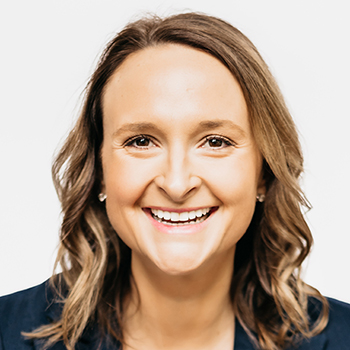
There will always be ground-level challenges that cause us to lose sight of what matters most for the long-term financial well-being of our organization. During times of industry turmoil and upheaval, it is paramount for leaders to keep their eyes on the long-term and planning for the future. Too many organizations do not take the time or spend the resources regularly to conduct market research, facilitate strategic planning, evaluate buildings and property, take inventory of capital needs, and identify opportunities. We must always be thinking of future residents and how we can meet not only their expectations, but also those of their family who are often the decision-makers. We will eventually arrive at a new-normal, post-pandemic environment, and you will want to position your facilities and services to provide the highest quality of care in an environment that is safe for everyone (residents, staff, families, donors, board members, volunteers, etc.) and one that leverages your ability to keep beds and units full.
Are you struggling to fill vacant beds? Is an entire wing or floor of your SNF vacant and has been for more than a year? Are you also struggling to fill assisted living beds or senior housing apartments? Have you often asked yourself, “What should we do with this space?” “Should we hold on to these beds?” “Will we ever be full again?” “Why am I paying the bed tax on these empty beds?” “Can the open space be converted to some revenue generating activity?” “What do I need to do to be repositioned for a post COVID-19 environment?”
Solutions to these questions could be as simple as increasing your marketing and branding efforts, assuming you are competitive in all other pertinent aspects. Or, the solutions could be much more complicated, costly, and time-consuming, up to and including completely revamping portions of your buildings and service offerings; in effect, recreating your organization from the ground up. In other words, there is not a single definition of “repositioning”—you’ll need to define it based on your organization’s needs.
Define Your Vision
The entire process starts with you, your staff, your current residents and their families, and your owners/board. The first step in this journey is to be inclusive and ask questions. Assess the problem and dig deep into your current situation. Your staff know what the problems are, your residents will be eager to share their thoughts and opinions, and your decision-makers are likely waiting for you to ask their opinions. During this process, take the time to determine your organizational core competencies. You don’t want to walk down a path only to find out your culture is not aligned with your strategy and you have to completely revamp and retrain your leadership and staff. Your vision needs to be written down and vetted over a period of weeks or months to determine whether it is viable and can be implemented. At this stage, you don’t want to stymie creativity, so don’t worry too much about viability.
Conduct a Market Demand Study
It is critical for you to understand the market environment in which you operate and identify key areas of need and gaps in supply for those needs. You might find a need for a service that fits in well with the empty space you have available, or you might find that what is needed in the market is not within your vision. Don’t assume you can simply change a license and the name on your building and expect there will be demand for your services. In many markets, you’ll come across barriers to generate demand for repositioned space. The affluence of the market you serve will dictate the type of space future tenants and residents will demand. Understanding your demographics will help you better assess whether demand can be generated for the product you want to create and whether you should proceed with investing in repositioning your facilities, programs, and services.
Competitor information is critical. The market study should include collection of data on available options in the market area that give you a detailed picture of competitor’s services, pricing, amenities, unit mix and sizes, and finishings. You need to know whether your repositioned building/unit can compete with the units that currently exist in the market. This data will be critical for establishing your price point—will it need to be lower than the market? How does that impact financial performance? Look for open beds/units and identify whether competitors have waiting lists; although not the only indicators, this information is key to determining unmet needs.
Assess Your Physical Plant
You might have great ideas about how your space could be used differently or how it could be reconfigured to more effectively provide care in a post-COVID-19 environment; creating a “better” and safer living environment for your residents and their families. We know from recently conducted surveys that safety concerns are a factor in deciding which service provider to choose for rehab, long-term care, senior housing, etc. Whether you are considering remodeling, revamping, repositioning, or reconstruction, you will need to conduct a facility assessment to understand what can be accomplished within the space; the limitations, both from life safety and code aspects; and the costs, both financial as well as time and human capital resources. The costs involved in implementing your vision may surprise you. Including conceptual drawings in your physical plant assessment will help you visualize proposed changes without getting in too deeply.
Conduct an Operational Assessment
Small changes may not have much operational impact and would not necessitate conducting financial assessments and projections of revenue and expenses and changes to operations such as staff, debt service, etc. Repositioning entire wings to an alternative use, however, will likely necessitate projections of changes to revenues, expenses, staff, workflow, delivery of services and care and to nursing, dining, marketing, and other departments. You might be required to borrow funds to implement your vision which will require a deep dive into your financials, and detailed projections of operations. You may also need to evaluate staff capabilities and determine whether changes are needed or additions to meet the future needs of residents and or manage your new services and programs.
In Summary
Don’t wait for another crisis to force you to plan. The time is now to understand your market, determine your capabilities, define your vision, and assess the viability of implementing strategies.
If you’d like more information on how HDG can help your organization improve its market relevancy, please contact us at info@hdgi1.com or 763.537.5700.





